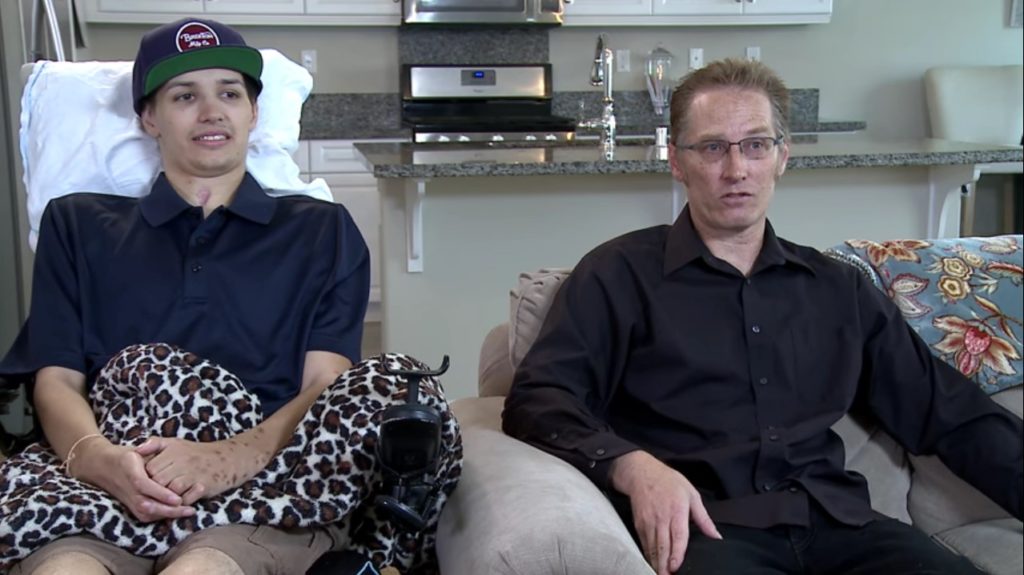One of the most marvelous medical breakthroughs in the history of the world has just occurred. For the first time, neuroscientists treated a total quadriplegic (a 21-year-old young man) with stem cells, and he has largely recovered the functions of his upper body after just two months.
This news is incredible for two reasons. First, using pluripotent stem cells, scientists have been able to help a patient’s severed nerves repair themselves. This discovery also points to the potential to accomplish the same sort of regenerative healing in every organ in our bodies.

One of my longtime best friends Patrick Cox brought this news to my attention. Patrick is the author of the Transformational Technology Alert newsletter from Mauldin Economics. He focuses primarily on biotechnology but looks at all sorts of interesting companies and technologies that are going to transform our world.
The depth of Patrick’s knowledge of multiple disciplines sometimes staggers me. In fact, major scientists call him to share results and ask questions. They do so hoping that Patrick will point them to other research that they haven’t come across yet. I kid you not. This guy is at the center of a nexus of anti-aging researchers and biotechnologists that has few parallels.
Below, is Patrick Cox’s weekly letter where he tells his subscribers about this fantastic breakthrough from one of the researchers he has followed for almost 20 years Dr. Mike West of BioTime (BTX).
BioTime Makes History with Announcement of First Stem Cell Spinal Cord Therapy Results
By Patrick Cox
USC neuroscientists just announced truly historic news about BioTime’s (BTX) (*see disclosure below) stem cell platform. For the first time, a quadriplegic patient with complete injury to the spinal cord has substantially recovered.
I’ve told you this was coming, but I wanted to get more information to you today as news of this long-awaited breakthrough in neurobiology spreads through the media. In fact, the news is even better than the information released by the Keck Medical Center of USC would indicate… and you should understand why.
A press release of this nature must follow strict conventions enforced by the SEC and FDA as well as traditional scientific guidelines. For example, the news release describes this spinal cord treatment, an injection of stem cells into the area of spinal cord injury, as “a procedure that may improve neurological function.” Watch the following video, however, and the only reasonable conclusion you can make is that the procedure has already done that.
Watch the entire B-roll video that USC has made available to the media. B-roll video isn’t edited as a story, of course. Rather, it’s meant to supply short video snippets for reporters. Nevertheless, most of this material is worth watching as it provides more information than is available in the extremely reserved press release.
Note that Charles Liu, MD, PhD, says that this procedure should change the way that scientists and doctors think about spinal cord injury, making it possible to aim for full functional recovery for the first time.
The part of the B-roll that really gets me is seeing Kris Boesen, the 21-year-old man who received the treatment, wipe tears from his eyes while expressing his gratitude toward the scientists who made it possible. Prior to receiving BioTime’s stem cell therapy, Boesen was completely paralyzed from the neck down and couldn’t even lift his hands to his face.
Note also that Boesen mentions that his recovery is ongoing—from the top of the spine downward. We don’t yet know if he will regain use of his lower body, but he reports positive indications.
The critical part of this story that is entirely left out of the press release, however, is that the patient would have made a far better recovery if he had been treated promptly. Boesen was injured on March 6 but could only communicate his desire to participate in the clinical trial through head movements. He had to undergo assisted breathing therapy before he could give verbal consent.
That means that about a month of serious scarification took place before 10 million AST-OPC1 cells were injected into Boesen’s cervical spine. Scarring is the enemy of nerve reattachment and the reason that this procedure is only being administered to patients who have recently suffered spinal cord injuries.
Nevertheless, those stem cells managed to sort out and self-assemble, connecting severed nerves correctly from the upper and lower sides of the injury. This is the true power of regenerative medicine. It doesn’t rely on the surgeon’s skill. It’s the patient’s genome and the biological wisdom inherent in pluripotent stem cells that affect the cure.
None of the scientists will publicly say this, but I’m positive that the results would have been much better and more rapid if Boesen had been given the injection immediately following his injury. Additionally, Boesen started his treatment in the middle of a dose-escalating study, so he was only given half of the full therapeutic dose. (A full therapeutic dose will probably be 20 million neural stem cells.) So by no means should we view his dramatic and life-changing results as typical of what would happen to a patient given optimal dosage promptly after injury.
Read Full Article – Source: Stem Cells – Medical Breakthrough Is A Game Changer For Biotech
Authors – John Mauldin & Patrick Cox, Mauldin Economics
Photo Credit – YouTube Video Screenshot